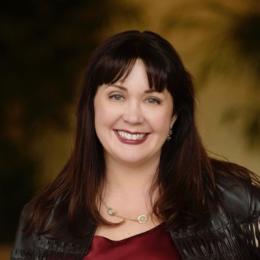As hope grows with vaccine distribution, questions regarding the pandemic’s impact on teams, leadership, and the transition to a hybrid work environment abound. In this series of articles, Amii Barnard-Bahn interviews top in-house leaders on their views of leading during the pandemic, return to work, and top tips for success.
I recently had the pleasure of sitting down with colleague and friend Lamis Hossain, legal director of product at Uber Health based in San Francisco where she supports a HIPAA-enabled technology solution that’s helped tens of thousands of patients and caregivers get transportation to and from healthcare, including more recently to and from COVID-19 vaccine appointments.
Amii Barnard-Bahn: It’s been an exceptional year, and during the pandemic, you’ve been at the forefront of innovating solutions at the intersection of technology and healthcare. With extraordinary triple-digit growth in your division in 2019 and new business use cases during the pandemic, such as delivery, how did you manage your team?
Lamis Hossain: During the pandemic, our team worked exclusively from home, especially legal teams in the Bay Area. Starting in September, our teams will be in a hybrid model with flexibility to work from home twice a week.
AB: Workplace flexibility frequently comes up with my clients who want to retain top talent. That’s great that you are offering that option, especially for working parents with kids returning to school in September. In a hybrid environment, what do you find is the top leadership skill needed to work effectively as in-house counsel?
LH: Empathy is important in any environment, but especially now. Listen to your team. Understand what they may be going through. People have been anxious for over a year. Some may continue to be anxious as the COVID-19 and its variants ebb and flow in certain places and impact certain countries more than others.
Some may still be anxious about their jobs after COVID-related layoffs in many companies. Some may be anxious because return to work “deadlines” don’t correlate with schools announcing in-person learning. Some may be anxious because they thrived in a remote environment and don’t feel confident about coming back to work in person.
AB: Agreed. Every employee has different needs, and the pandemic really brought personalization to the forefront for managers who wanted to ensure all employees were engaged and supported in their work. Have you hired new team members during the pandemic?
LH: Our teams re-organized during the pandemic, which resulted in new leaders, new managers, and new team members for many of us. And this includes some that we had never worked with or even met in person before. Transitions are difficult in normal circumstances, and they are even more challenging during a pandemic. One way we’ve successfully maneuvered these transitions is by spending “informal” time with each other such as coffee chats and fun virtual team building.
AB: In a hyper-growth environment like yours, it makes sense that you would need to constantly be pivoting to meet market and client demands. In a hybrid environment, what qualities would you look for in a new hire?
LH: I look for a team member who is adaptable. Someone who can stay engaged and motivated in changing and challenging circumstances.
"But when some people start being in the office when others are not, or are in the office on alternate schedules, or are in different offices, we have to continue to be inclusive with team meetings."
– Lamis Hossain, legal director of product at Uber Health
AB: What tech tools have you used to communicate with your team? Which is your favorite and why?
LH: Zoom and Slack are in constant use where I work. I’ve grown fond of Slack for quick chats without having to hop on Zoom. I can’t remember the last time I used the phone for work.
AB: What is one effective communication practice you’ve adopted?
LH: I’ve tried to focus more than ever on active listening. And ironically, one way I’ve done this more effectively during the pandemic is to encourage everyone to switch the camera off once in a while. There are studies now that show how exhausting and unnatural Zoom is, and particularly the negative impact of the Zoom “self-view” on women.
For some of our meetings, we don’t turn the camera on. Sometimes it’s deliberate and other times, we’re just picking up on each other’s moods and stress levels. Without the camera, we can focus on just listening to each other or reviewing a document together with screen share. In a 1:1, I’ve found that this can lead to more meaningful, personal conversations than if you’re staring at each other.
AB: I completely agree and that’s consistent with my client work. If you’ve already built a good foundational working alliance, you can achieve a deeper connection with colleagues and stakeholders by reducing sensory stimulation. In your experience, what interpersonal behavior can lead to conflict in a hybrid work environment?
LH: Lack of inclusion and transparency can create conflict in a hybrid environment. Right now, we’re all more or less in the same boat when everyone is remote. But when some people start being in the office when others are not, or are in the office on alternate schedules, or are in different offices, we have to continue to be inclusive with team meetings. And we have to remember to mix long-awaited in-person happy hours with Zoom happy hours, and to share information if ad hoc meetings are taking place at lunch or in the hallway.
AB: That’s definitely a risk. When people have different working schedules, it has the potential to lead to unequal sharing of information, interpersonal bonding, and, for managers, perceived favoritism. What is one habit you or your team has adopted to set healthy work/personal boundaries?
LH: I’ve used calendar blocks to create space between meetings, including using tools like Clockwise to automatically create focus time. For most of the pandemic, I’ve been able to walk my dogs with my husband before sunset. I look forward to being outdoors and it’s helped me avoid burnout during a pretty stressful work year.
Teammates with small children at home have found it most challenging to find balance and some of them are trying to take breaks in smaller increments, such as 10 minutes. As we begin taking real vacations again, I’ve tried to model to team members how to switch off work: check and keep track of your email if you have to, but don’t respond, unless it is to reach out to a team member for assistance.
AB: I agree, it’s been important to be able to get outdoors whenever possible to avoid the claustrophobia of being at home 24/7. My dog has been a lifesaver. What is one piece of advice you would give to other in-house counsel navigating the transition “back-to-work”?
LH: For many of us, going back to work after more than one year can feel like we are starting a new job. This is especially true if you are meeting new managers and team members in person for the first time.
We’re all catching up on haircuts, personal care, the “COVID 15” weight gain, and for some, we are dealing with social anxiety after avoiding people for a year. But don’t put too much pressure on yourself to make a great “first” impression! It’s the same people you’ve seen on Zoom after all.





